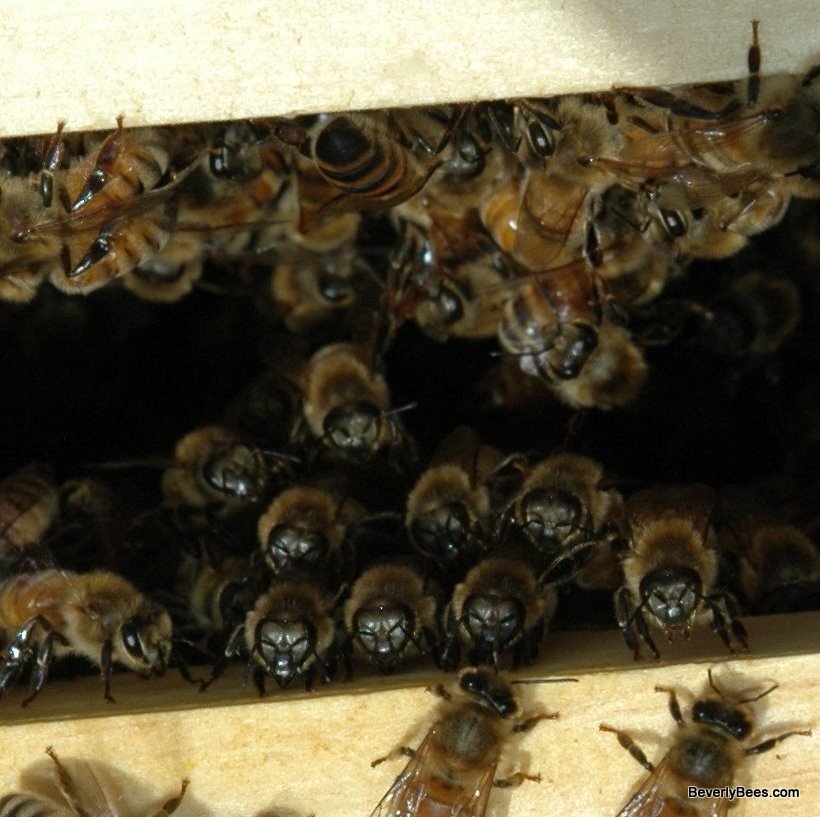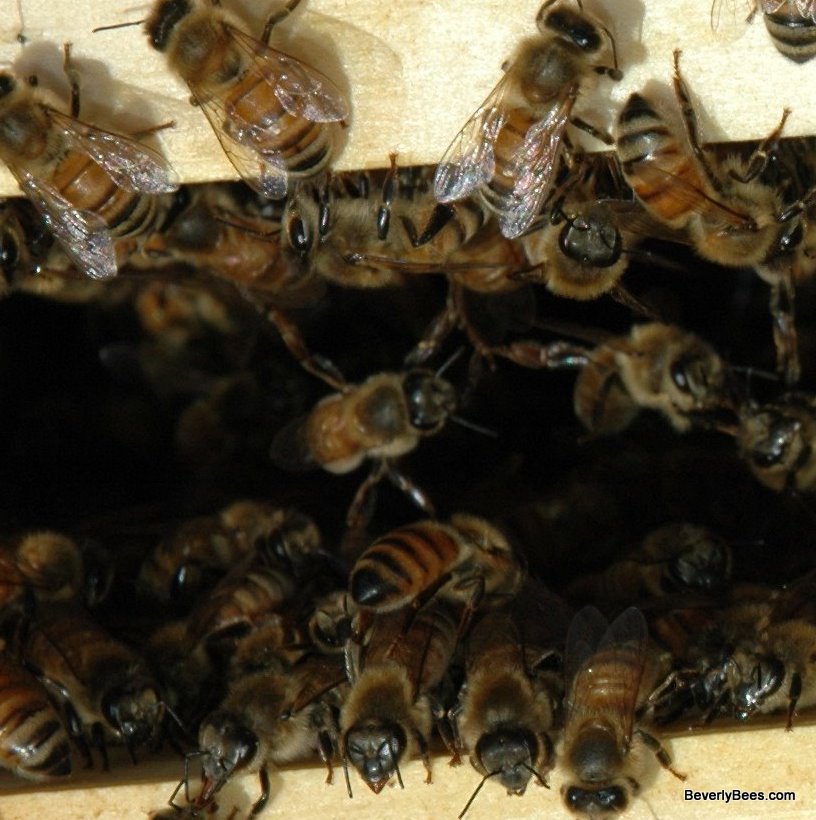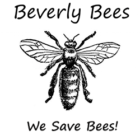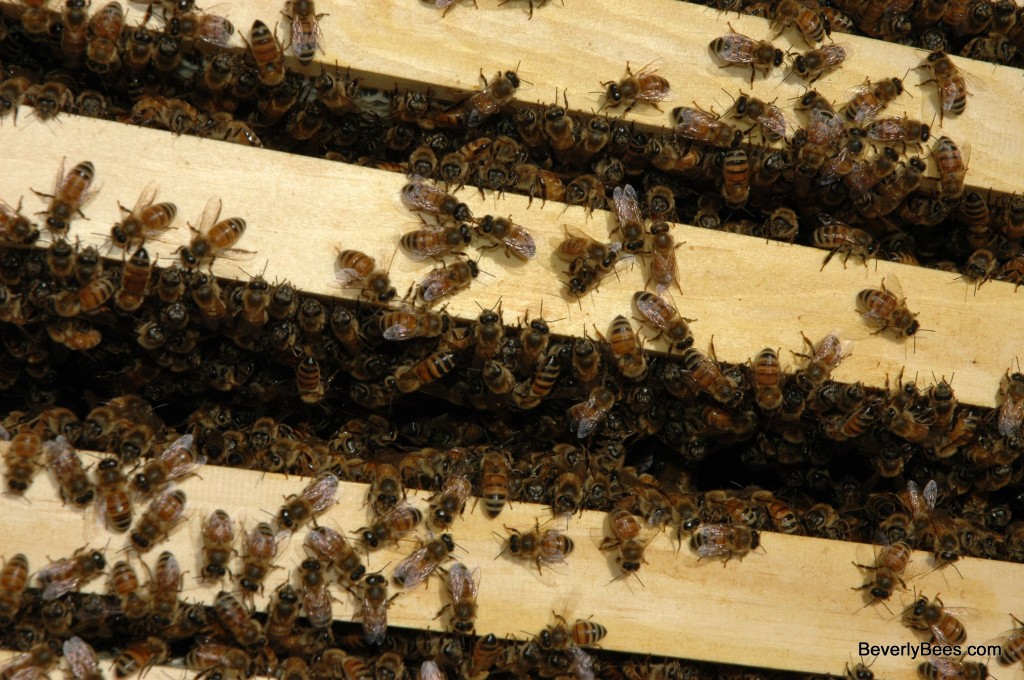In some ways they are even Claustrophilics.
And when that space is the coveted 5/16 of an inch they are in heaven.
Honeybees are very particular about spacing inside their hive. If you give a bee a space larger than 3/8 of an inch they will fill it up with burr comb which they may later fill with honey, larvae, nectar or pollen. This burr comb can make a mess of your hive quickly, make working it difficult and is the reason I recently cut mine out.
If you give a bee a space less than 1/4 of an inch they will fill it up with propolis, a type of bee glue which is very sticky and makes prying apart frames and separating hive bodies near impossible if there is too much of it (“think very condensed honey or pine sap”).
Bees like things to be a certain distance apart in their hive. It is an obsession with them and if it wasn’t so beneficial to their habitat and colony activities some could even call it an obsessive compulsive disorder.
This phenomena in bee behavior gives rise to the “bee space”. The ideal space for bees to move around inside the hive without cementing it shut or filling it up to make it smaller is anywhere between 3/8 inch and 1/4 of inch, with 5/16 inch being the accepted space of many beekeepers.

In addition to the bee space almost all bee jobs require bees to be very close together. On its own one single bee could not survive. The bee colony functions as one loving, breathing organism and requires the cooperative efforts of every bee not for himself but for the good of the colony. Bees pass messages through pheromones, they tell other bees how sweet the nectar is by giving them a taste, baby bees are all snuggled close together in individual cells to make it easier to feed them, when bees need to stay warm they cluster together in a ball and help each other generate heat, and when bees build wax they hang connected together in a process called festooning. These are just a few examples showing the need for bees to be so close together. You or I would not last a day like that but for bees this is their perfect paradise.
In this picture honeybees are exchanging a taste of nectar. Can you see the three bees with their red tongues sticking out?

Look at the other bees huddled on top of one another, this aids in passing chemical messages throughout the hive.
Bees are building wax, or “festooning” in the picture below. The frames are pulled apart slightly to give you a view inside this process. There is also a bee exchanging nectar on the lower left hand side.

I can’t imagine living this close together all the time, and thinking about it makes me feel claustrophobic, but the bees depend on this lifestyle to survive. I think Jacques Yves Cousteau sums it up best when he says –
“The happiness of the bee and the dolphin is to exist. For man it is to know that and to wonder at it.”

